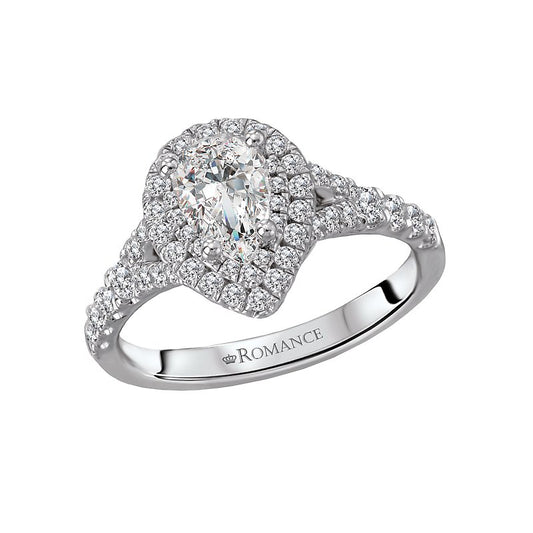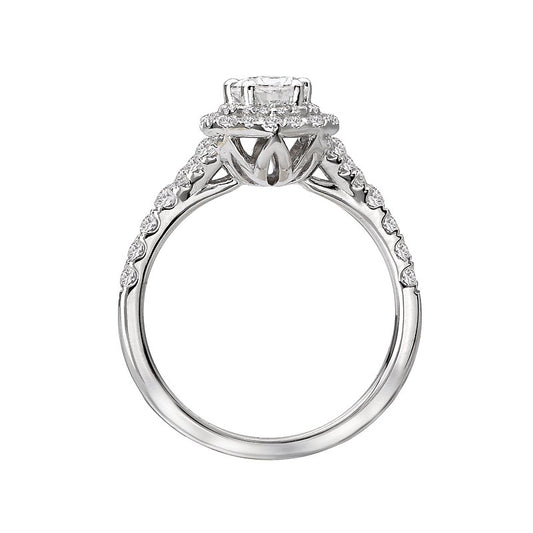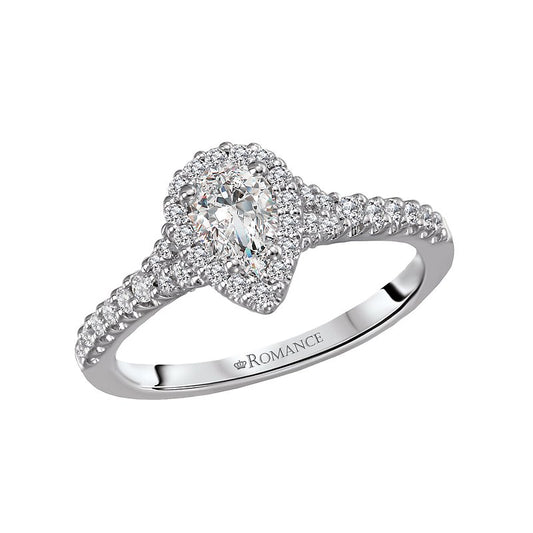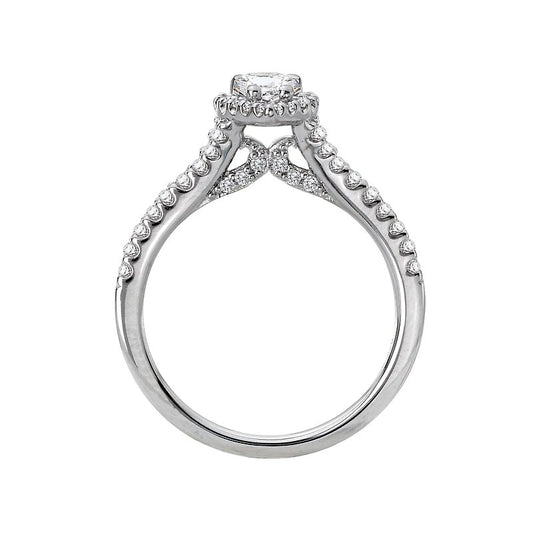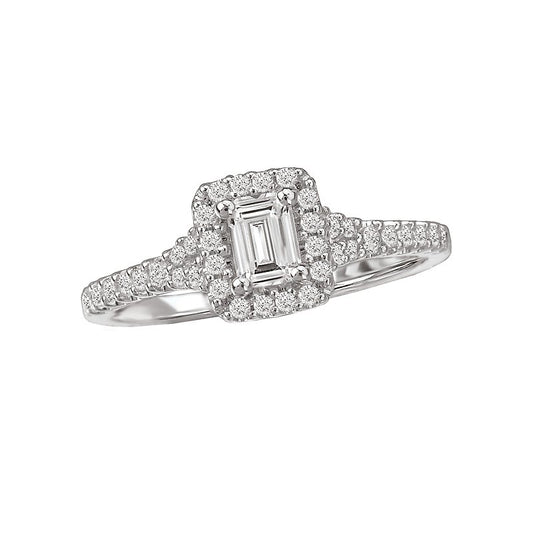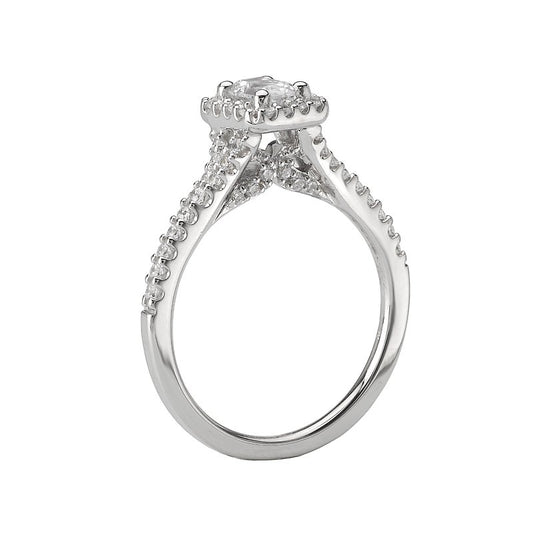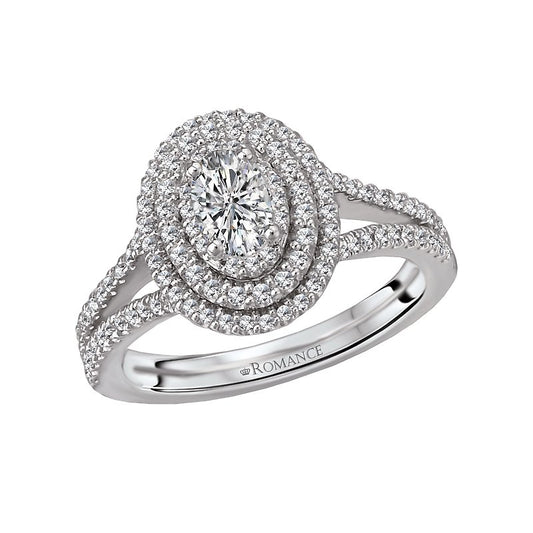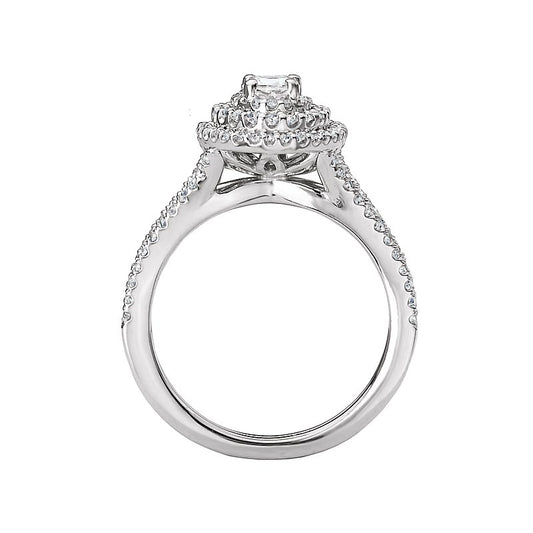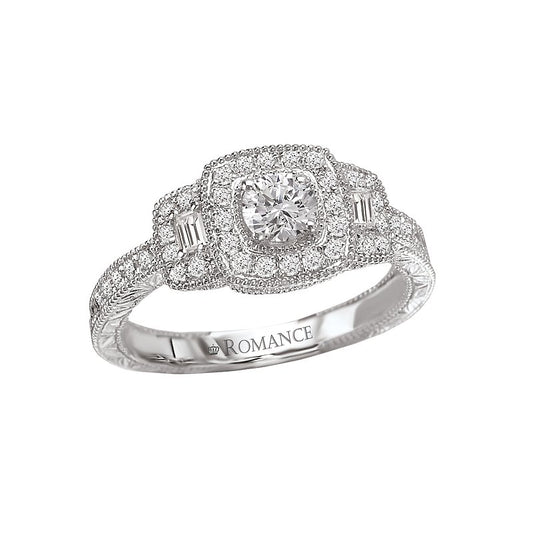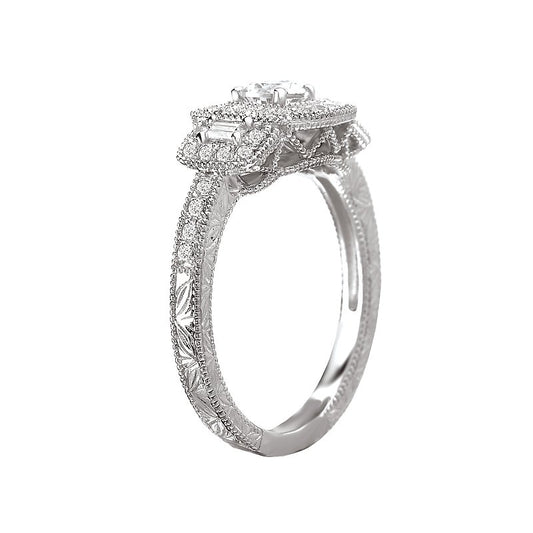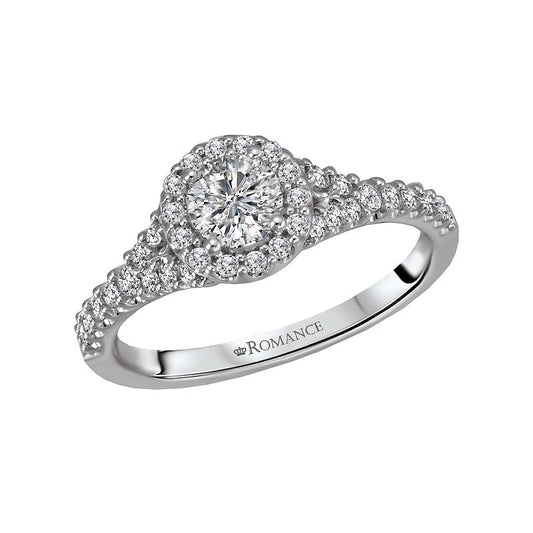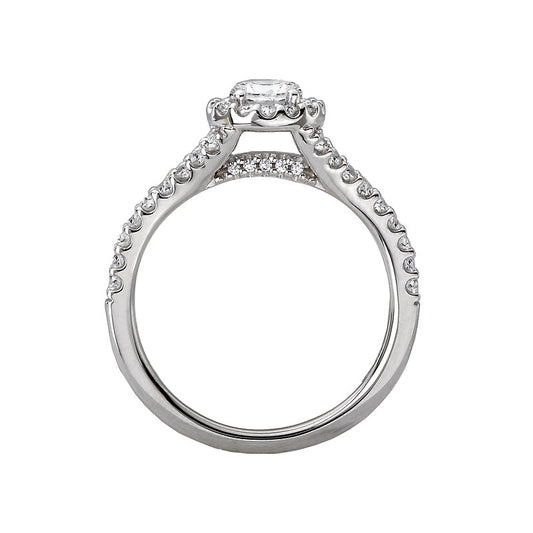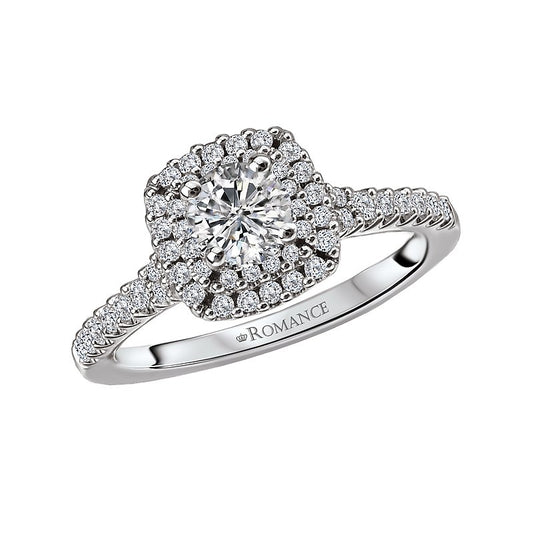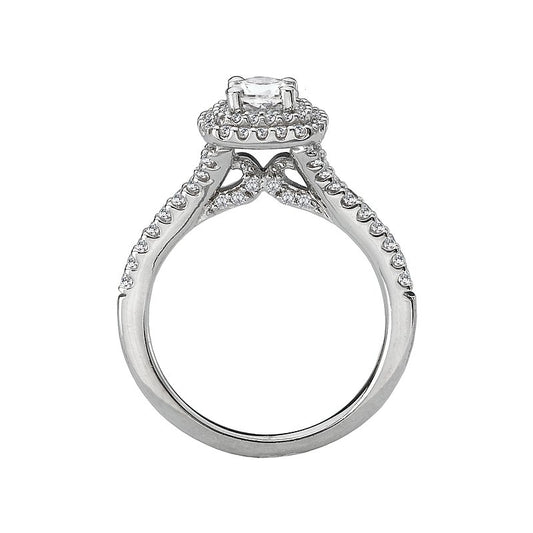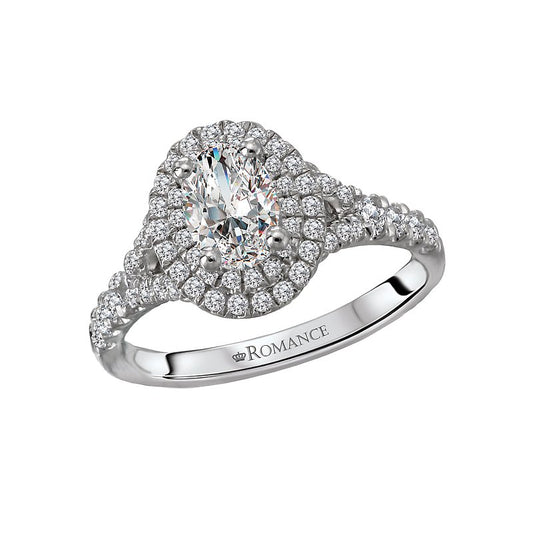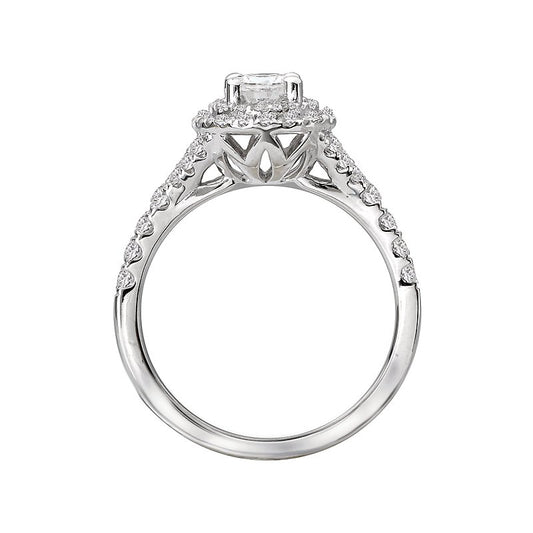-
14K White Gold Delicate Cushion Halo Engagement Ring With Pave Shank | FANA
Regular price $2,250.00 USDRegular priceUnit price / per -
Romance Bridal Pear Diamond Halo Ring with 1.20 Carats
Regular price $6,999.00 USDRegular priceUnit price / per$8,068.00 USDSale price $6,999.00 USDSale -
Romance Bridal Pear Diamond Ring with 0.75 carats
Regular price $3,299.00 USDRegular priceUnit price / per$3,860.00 USDSale price $3,299.00 USDSale -
Romance Bridal Emerald-Cut Diamond Ring with 0.75 carats
Regular price $3,299.00 USDRegular priceUnit price / per$3,700.00 USDSale price $3,299.00 USDSale -
Romance Bridal Oval Diamond Double Halo Ring with 0.88 carats
Regular price $3,899.00 USDRegular priceUnit price / per$4,500.00 USDSale price $3,899.00 USDSale -
Romance Bridal Vintage Style Diamond Ring with 0.75 Carats
Regular price $2,999.00 USDRegular priceUnit price / per$3,560.00 USDSale price $2,999.00 USDSale -
Romance Bridal Diamond Halo Ring with 0.73 carats
Regular price $3,099.00 USDRegular priceUnit price / per -
Romance Bridal Diamond Halo Ring with 0.88 Carats
Regular price $3,599.00 USDRegular priceUnit price / per$4,257.00 USDSale price $3,599.00 USDSale -
Romance Bridal Oval Diamond Halo Ring with 1.20 Carats
Regular price $6,999.00 USDRegular priceUnit price / per$8,077.00 USDSale price $6,999.00 USDSale -
14K White Gold Delicate Classic Engagement Ring | FANA
Regular price $2,000.00 USDRegular priceUnit price / per -
14K White Gold Timeless Round Cut Solitaire Engagement Ring | FANA
Regular price $1,075.00 USDRegular priceUnit price / per -
14K White Gold and Diamond Twist Engagement Ring | FANA
Regular price $1,450.00 USDRegular priceUnit price / per -
14K White Gold Classic Pave Round Cut Engagement Ring | FANA
Regular price $2,125.00 USDRegular priceUnit price / per -
14K White Gold Three Stone With Pave Engagement Ring | FANA
Regular price $2,875.00 USDRegular priceUnit price / per -
14K White Gold Engagement Ring with Three Rows of Pave Set Diamonds | FANA
Regular price $2,875.00 USDRegular priceUnit price / per -
14K White Gold Classic Oval Diamond Solitaire Engagement Ring With Hidden Pavé Halo | FANA
Regular price $2,575.00 USDRegular priceUnit price / per
Collection: Engagement Rings Sale
An engagement ring is one of the most important purchases you’ll ever make in your life, as it symbolizes your undying love for another person, and announces to the world that you’re making a lifetime commitment to your fiancé, and together you’re embarking on a journey that will profoundly change both of your lives. There are very few other material objects that possess as much importance as an engagement ring. If you’re getting engaged, you’ll want to make sure you get just the right ring for this momentous occasion, and here at Avonlea Jewelry, we’ll help you do just that.
There Are Many Factors to Consider
Because of the importance of the event it’s symbolizing, and its importance to yourself and your fiancé, careful thought and consideration should be put into choosing an engagement ring. Of course, price will usually be a consideration, but ideally, you’ll want to consider the many other factors that will go into your decision, weigh them all carefully for how important each one is, and then, once you’ve settled on the other criteria, you’ll want to look at what’s available in your price range.
Engagement Ring Size
It’s very important to get the correct size when purchasing your ring. Many people are under the impression that resizing engagement rings is always an option, and isn’t really a big deal. That’s not exactly correct. While the vast majority of rings can be resized, there are some that cannot. Also, even with engagement rings where it’s possible to resize them, it’s best if the ring only needs to be adjusted a little bit – making more than slight changes to the size can damage a ring’s structural integrity.
In today’s world, it’s a lot more common than it used to be for a man to know what size ring his fiancé wears, but it’s far from universal. If you don’t know the correct ring size, how do you figure it out without ruining the surprise of the proposal? There are several ways to accomplish this goal, and one of them might work for you. If your fiancé already wears rings as jewelry, see if you can “borrow” one without her knowing it. (Keep in mind that ring sizes can vary a little bit from one hand to the other on a person.)
If that’s impossible, her family might know what size she wears, or some of her friends may be able to tell you - assuming you can trust her friends or family to keep the secret! If none of these work, ask some of your friends and relatives how they knew which size to buy when they bought their engagement rings. There’s almost always a way to come very close to the right size without spoiling the surprise.
Choosing the Gemstone for Your Ring
Many different gemstones can be used in engagement rings. Rubies, emeralds, and sapphires are three of the most common, other than diamonds, which are by far the most popular choice. One reason most people choose diamond engagement rings is because diamonds are much harder, and therefore much more durable, than other gemstones. If you do choose to go with something other than a diamond, the three gemstones listed above are probably your best options. Just make sure to get one that’s rated 7 or higher on the MOHS scale of mineral hardness (MOHS scale).
Selecting a Diamond Engagement Ring
If you’re interested in a diamond engagement ring, you may have heard of the 4Cs, which are the four most important characteristics of diamonds. They are cut, color, clarity, and carat. Of the four, cut is considered to be the most important, and it refers to the way the diamond was cut. Diamond cutting is a true art, and prices for the diamonds with the highest quality cuts reflect that. Cut is graded on a scale – Poor/Fair, Good, Very Good, and Ideal. Only about 3% of diamonds are rated Ideal. The reason cut is so important is that it determines three very important aspects of the diamond – the brilliance, the fire, and the sparkle.
Brilliance, Fire, and Sparkle
While there are certainly differences of opinion about favorite shapes and mounts when it comes to engagement rings, everyone agrees that the more a diamond dazzles the eye, the better. This ability to dazzle the eye has a technical name – it’s called sparkle, and it can vary widely between diamonds. (The really technical term is scintillation, but most people just call it sparkle.) A diamond’s sparkle is based on the combination of its brilliance, and its fire. The brilliance of a diamond is simply the white light that emanates from it when light strikes it. The fire of a diamond refers to the breakdown of the light into different colors as it reflects out, much like with a prism. Taken together, these two aspects of a diamond constitute its sparkle, and the more a diamond sparkles, the more attractive it is, which is why diamonds with high levels of sparkle cost quite a bit more than those with low sparkle levels. And the biggest factor in how much sparkle a diamond has is how expertly it was cut.
Considering Color
After cut, the second most important factor in a diamond’s quality is its color. It’s important to clarify at this point that this has nothing to do with the fire we just talked about. When a diamond has nice fire, you’ll see all the colors of the rainbow reflected from it. But when we talk about “color”, we’re referring to the color of the diamond itself, its inherent color.
Talking about a diamond’s color may seem odd – after all, aren’t all diamonds colorless? Actually, while diamonds may appear to be clear or colorless, nearly all of them contain some color, or hue. Technically, there are a few absolutely perfect diamonds which are judged to be absolutely colorless, but they are extremely rare. Color is graded on a scale, from D to Z, with D being absolutely colorless. Anything from D-G is considered to be in the Colorless range. Diamonds graded H-K are Near Colorless, L-O diamonds are Faint, P-U diamonds are Very Light, and diamonds graded from V-Z are considered Light. If the average person were to see these depicted side to side, they might be able to detect a faint yellowish hue on the right side of the scale, but as you move closer to D, it gets harder and harder to detect any differences with the naked eye. Still, a diamond’s color rating is considered a very important factor in its quality and price.
Clarity is Another Factor
The third of the 4 Cs is clarity, which refers to the number and kinds of blemishes and inclusions a diamond has. Blemishes are outer flaws; inclusions are inner flaws. These are measured at a magnification of 10X. The highest possible grade is (FL) Flawless, but Flawless diamonds are extremely rare, as a diamond needs to have both no inclusions and no blemishes to qualify. The next highest rating is (IF) Internally Flawless. Then there are two grades of Very Very Slightly Included (VVS1 and VVS2), two grades of Very Slightly Included (VS1 and VS2), and three grades of Slightly Included (SI1, SI2, and SI3). The three lowest grades are Included (I1, I2, and I3). Don’t read too much into the words “blemishes” and “inclusions”, however. For all the clarity ranks except for the three levels of Slightly Included and the three levels of Included, virtually none of these flaws are apparent to the naked eye. While clarity does affect the price of diamond engagement rings, most experts agree that it’s less important than cut and color, as the average person won’t be able to tell one level of clarity from another.
Carat is The Last of the 4Cs to Consider
We’ve considered cut, color, and clarity – now let’s talk about carat. Many people think carat refers to the size of a diamond, or its dimensions. However, carat is actually a measurement of weight. Obviously, bigger diamonds will tend to weigh more, but size and weight are not the same thing, and carat refers to weight. The average diamond engagement ring is one carat. A two carat ring is considered large, and a three carat ring is strikingly large. Of course, the larger the diamond’s carat, the higher the cost will generally be. Going for slightly less than full carat weights can cut the cost of an engagement ring substantially; a ring that is 0.9 carat looks almost exactly like a 1 carat ring, but costs quite a bit less.
Choose Avonlea When You Choose Your Ring
If you’re looking for an engagement right, take your time, and consider all the factors before making your final decision. Getting engaged to be married is one of life’s most important milestones, and you’ll want to weigh all your options carefully. But no matter which kind of engagement ring you choose to go with, we can help. With our expert knowledge, wide selection, and excellent customer service, there’s simply no better place to turn to than Avonlea Jewelry when it’s time to make this once in a lifetime investment.


